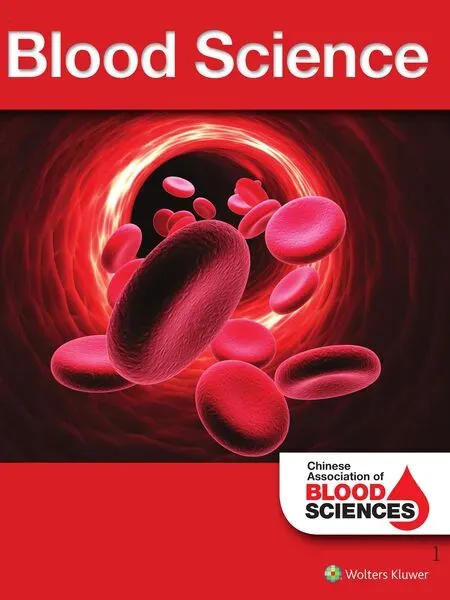Will immune therapy cure acute myeloid leukemia?
2019-11-02RobertPeterGale
Robert Peter Gale
Division of Experimental Medicine, Department of Medicine, Centre for Haematology Research, Imperial College London,London, UK
The truth will set you free but first it will make you miserable.President James A.Garfield
There is considerable recent progress in using immune therapy to treat diverse cancers.In hematology this progress is concentrated in therapy of lymphoid cancers including acute lymphoblastic leukemia (ALL), lymphomas, and plasma cell myeloma.Effective therapies include monoclonal antibodies such as rituximab, antibody-drug conjugates such as brentuximab vedotin, antibody-radionuclide conjugates such as 131-iodine tositumomab, bi-specific monoclonal antibodies (BiTE®antibodies) such as blinatumomab and chimeric antigen receptor T-cells(CAR-T-cells)to CD19,CD20,and to BCMA.The target of these immune therapies is B-cell lineage antigens such as CD19,CD20,and BCMA rather than cancer-specific antigens.Efficacy of these interventions is more effective than checkpoint-inhibition directed antibodies such as those to PD-1,or PD-1L or antibodies to CTLA-4 which are more effective in solid cancers.
Given these immune therapy advances in lymphoid cancers one might expect similar success in using immune therapy to treat myeloid cancers such as acute myeloid leukemia (AML) and chronic myeloid leukemia(CML).However,this is not so.There is only one FDA-approved therapy of myeloid cancers,gemtuzumab ozogamicin (myelotarg®) for AML which was first approved >10 years ago.Why this discordance?The answer lies in two considerations: lack of a robust AML-specific target antigen(s) and relatedly, unacceptable adverse effects resulting from non-specificity of target antigens used in AML immune therapy.As discussed, targets of immune therapy in lymphoid cancers are lineage- not cancer-specific.While killing all normal B- and T-cells is compatible with life (normal functions can be reversed by,e.g.,giving intravenous immune globulin[IGIV]),it is presently impossible to adequately replace loss of normal bone marrow function except via a hematopoietic cell transplant.So,for example, although CD33 and CD124 are present on almost all AML cells they are also present on all normal myeloid cells.Consequently,therapy against these non-specific target antigens can potentially kill AML cells but will unavoidably destroy normal bone marrow function resulting in death absent a transplant or using synthetic biology (see below).
There are other limitations in considering whether immune therapy can cure myeloid cancers.Considerable data indicate the immune system is effective in controlling lymphomas.For example, lymphoma-risk is markedly increased in persons with immune suppression such as severe combined immune deficiency(SCID),acquired immune deficiency syndrome(AIDS),and solid organ and hematopoietic transplant recipients.Most of these lymphomas are Epstein-Barr virus(EBV)-related.However,few data suggest anything but a modest increased risk of AML,CML,or myelodysplastic syndrome (MDS) in similar populations.1These data imply less immune surveillance against myeloid cancers compared with lymphoid cancers.
In contrast, considerable data indicate a strong immune response to myeloid cancers in the setting of a hematopoietic cell transplant.For example,among persons with AML receiving an HLA-identical sibling transplant,cumulative incidence of relapse(CIR) is highest among recipients of transplant from genetically identical twins and lowest among recipients with acute and chronic graft-versus-host disease (GvHD).2Donor lymphocyte infusions (DLI) also induce remissions in transplant recipients with recurrent leukemia,usually with synchronous GvHD.These transplant-related antileukemia effects are referred to as graftversus-leukemia (GvL).Elsewhere my colleague and I discuss whether this effect is leukemia-specific or against HLA and/or non-HLA antigens and not leukemia-specific.3
We can envision potential immune therapy using along two strategies: antibody therapies and cell therapies.Antibody therapies can be further divided by technology such as unmodified antibodies, antibody-drug conjugates, antibodyradionuclide conjugates(radio-immunotherapy),bi-specific antibodies, and other more advance techniques.As indicated, the major current limitation of these approaches is lack of an AML-specific target antigen.For the reasons discussed checkpointinhibitor antibodies and antibodies to CTLA-4 are unlikely to be very effective when used alone in persons with AML.A related problem is the relative lack of neo-antigens in AML compared with solid cancers.For example AML cells have an average of 0.28 mutation per megabase of DNA compared with 8.15 mutations for lung cancer, 40-fold less.
My colleagues and I recently reviewed the current state of cell therapy of AML.4We discuss several approaches inkling naturalkiller (NK)-cells, T-cells, cytokine-induced killer cells (CIKs),CAR-T-cells, CAR-NK-cells, and others.We conclude while there are interesting preliminary data there are not yet convincing data these approaches are successful in treating AML.Perhaps the strongest current data are for NK-cells.5

Figure 1.Advantages and challenges of immune therapy for AML.
Synthetic biology may offer a solution to the problem of the lack of an AML-specific target antigen.For example, using CRISPR/Cas9 technology it is possible to develop human hematopoietic progenitor cells without CD33.Such cells could be used to restore bone marrow function in persons with AML treated with anti-CD33 CAR-T-cells.6
In summary, immune therapy of AML poses challenges different from immune therapy of lymphoid-lineage cancers.There is progress,for example with gemtuzumab ozogamicin,but major challenges remain the most pressing of which is lack of one or more AML-specific target antigens and the unacceptability of collateral damage to normal bone marrow function.Whether these challenges can be overcome is unknown.There are,however, certain potential advantages to immune therapy of AML compared with other cancers such as accessibility of the cancer cells and susceptibility to killing.Positive and negative features of immune therapy of AML are displayed in Figure 1.Whether synthetic biology approaches can help advance immune therapy of AML needs testing.Considerable work remains.
杂志排行
血液科学的其它文章
- Successful ex vivo expansion of mouse hematopoietic stem cells
- A chemotaxis model to explain WHIM neutrophil accumulation in the bone marrow of WHIM mouse model
- Interleukin-12 supports in vitro self-renewal of long-term hematopoietic stem cells
- The disruption of hematopoiesis in tumor progression
- Progress of cGVHD pathogenesis from the perspective of B cells
- Molecular mechanisms for stemness maintenance of acute myeloid leukemia stem cells
